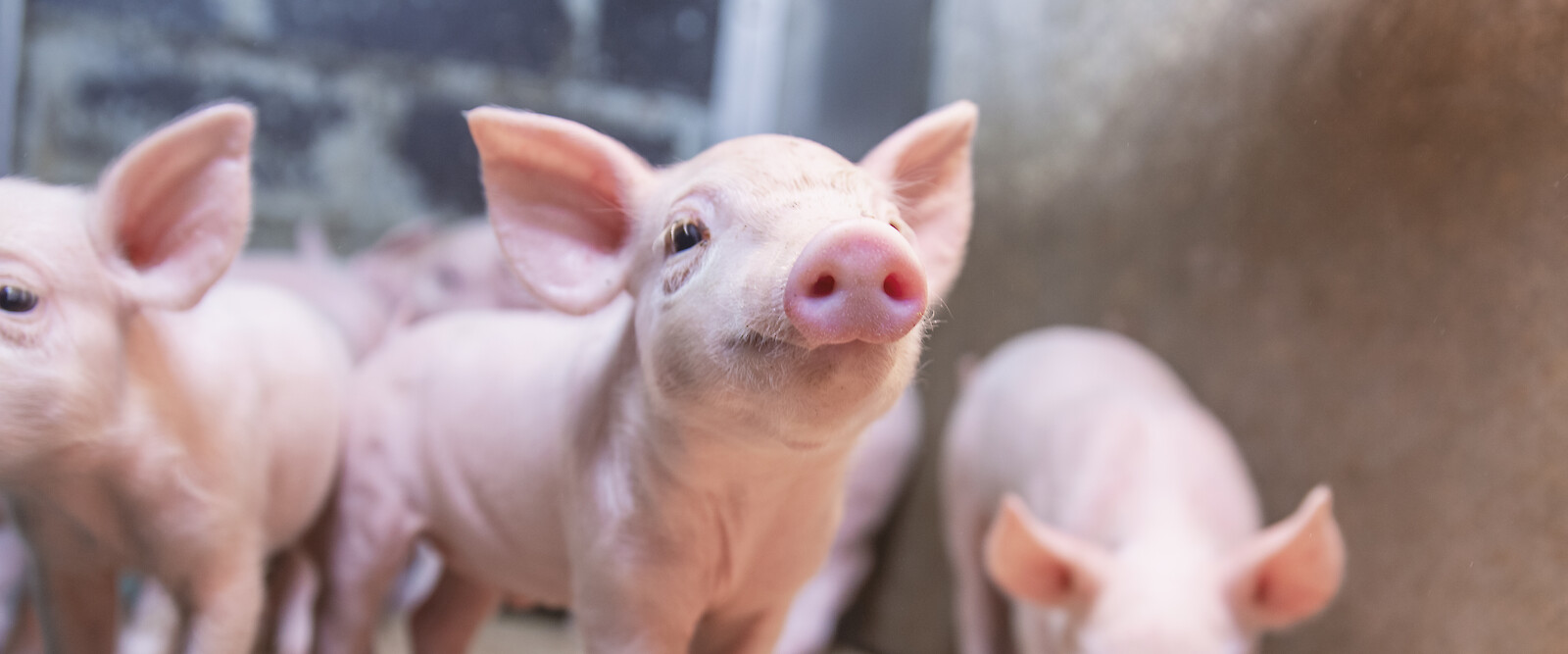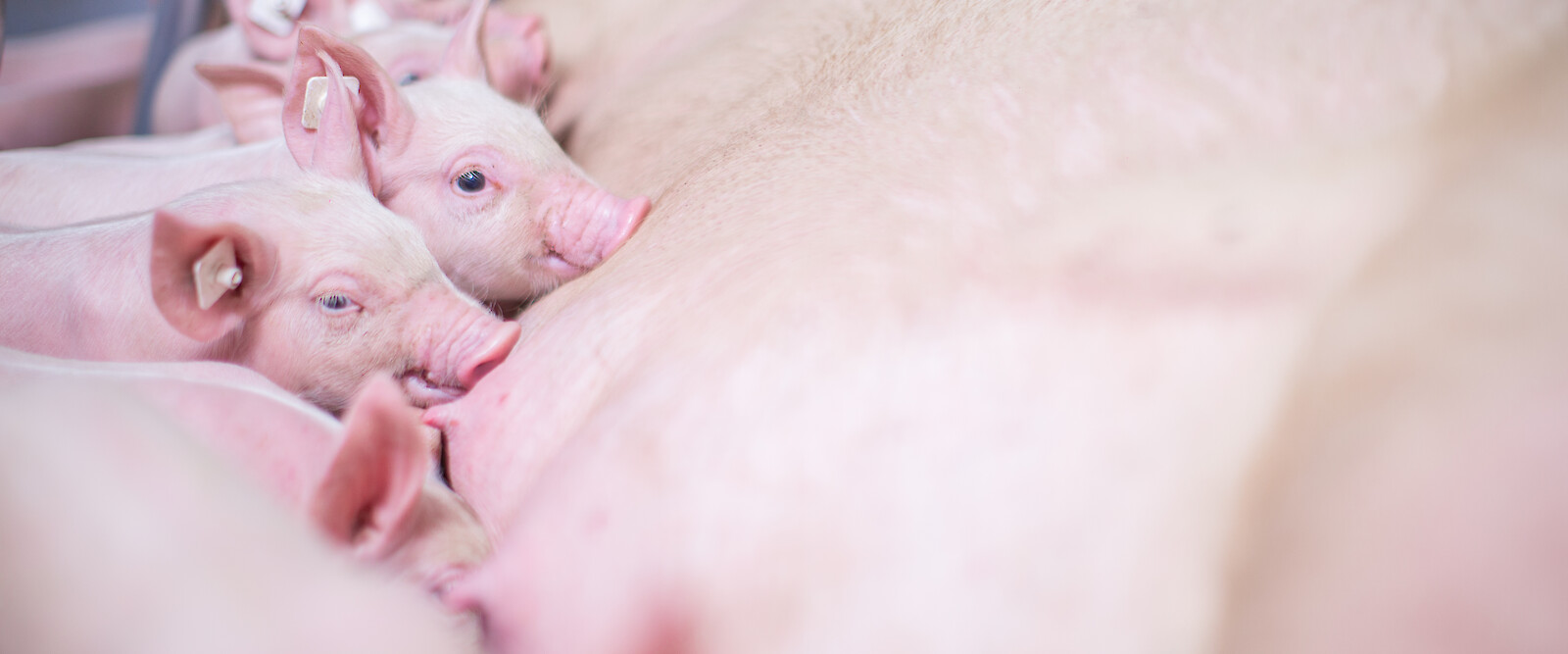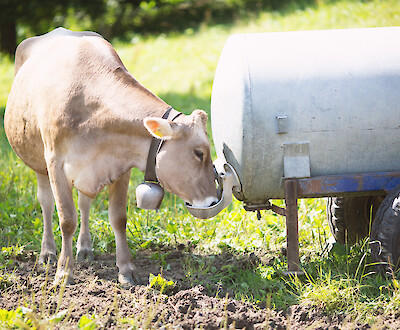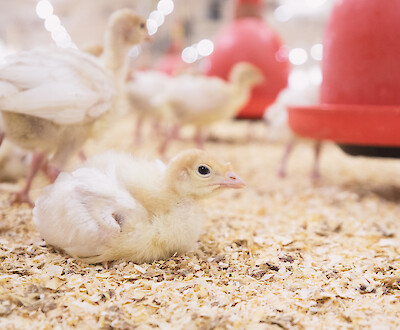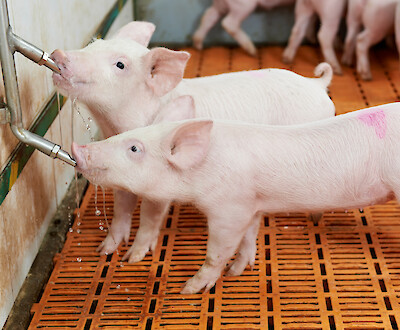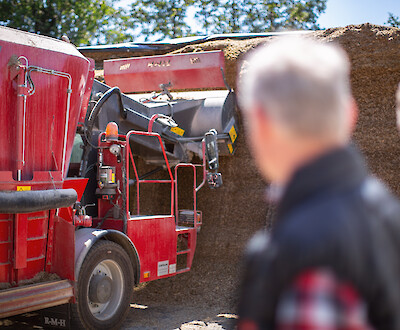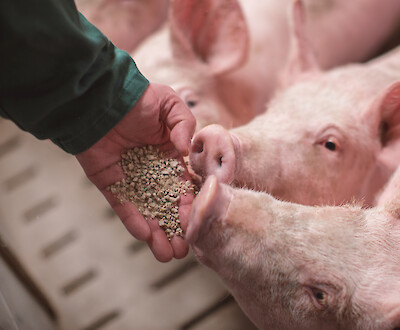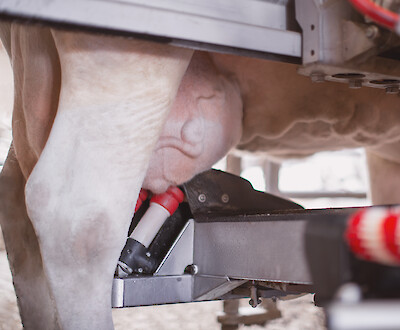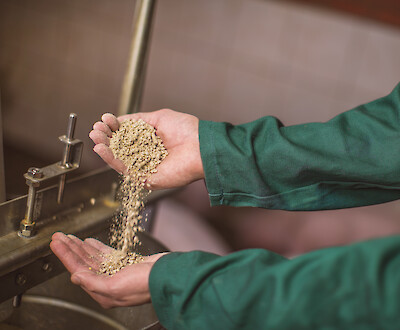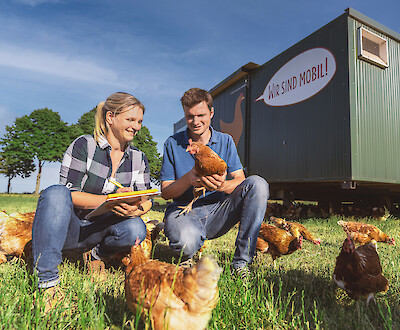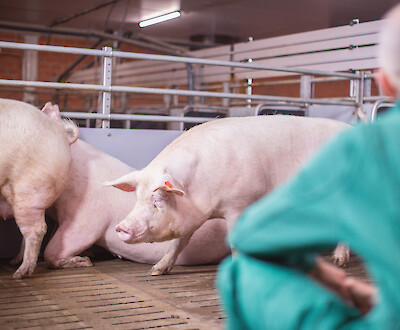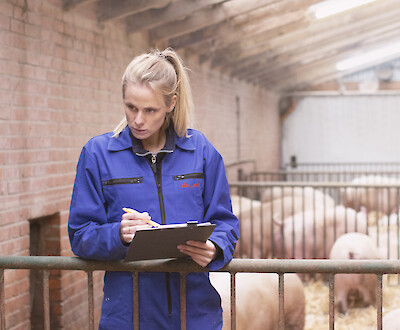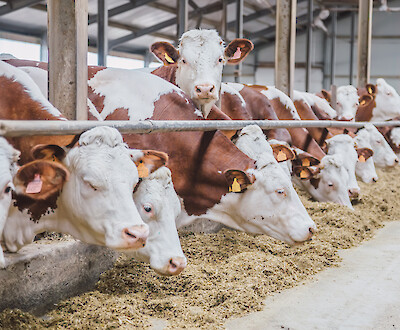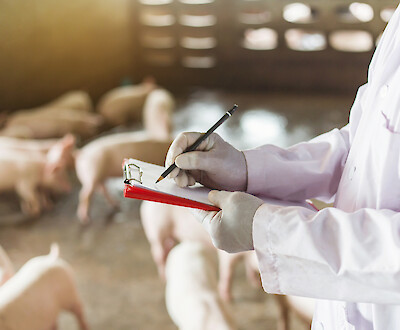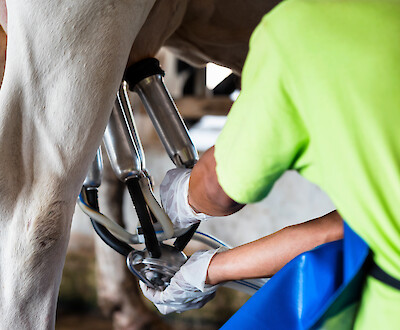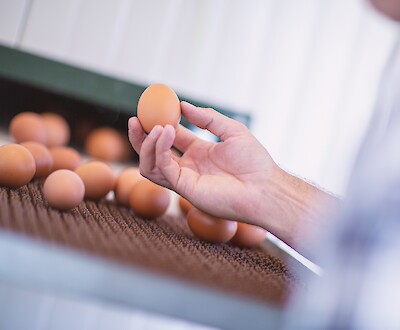How to choose the right piglet feed for weaning
Weaning piglets correctly: this is how it's done!
Weaning from the sow is a drastic experience for piglets. During this time, the course is set for the further development of the piglets. Growth deficits caused by too much stress, poor hygiene or inadequate feeding are difficult to make up for later. In this article you will find tips and tricks for a smooth weaning of the piglets. The right feeding plays a key role in this.
After the end of the suckling phase, piglets are separated from the mother sow. This is usually the case after 21-28 days, when the young pigs weigh about 6 -8 kg. After this, a stressful phase in the animals' lives begins, with many stumbling blocks for their further growth and development. The day of re-housing deserves special attention.
Reduce stress for piglets on weaning day with simple tricks
The day of weaning is the most stressful day for piglets right at the beginning of piglet rearing. In addition to being separated from the sow, the piglets are moved directly to the flat deck. In addition to a new environment, they also have to get used to new members of their own species. Pig farmers can significantly reduce the stress of their piglets by creating optimal conditions.
Tips for a good start in weaning phase and rearing
Adjust feeding already on the sow before weaning
The change from liquid to solid food is an important change for piglets at weaning. Suckling piglets initially feed exclusively on their mother's or sow's milk. Their digestive cycle is therefore optimally adapted to this form of nutrition. To enable a gentle transition to solid food, suckling piglets should therefore be given solid feed in addition to sow's milk as early as one week after birth. A particularly tasty prestarter (e.g. deuka primo plasma) with a high whey content, whose taste is familiar to the piglets, is suitable for this.
During the further suckling phase, a prestarter (e.g. deuka primo wean or deuka primo start) should be fed, which, due to its composition, can also be fed after weaning. In addition to a high whey content, it also contains starch, which the piglets have to get used to digesting. In this way, the gastrointestinal tract can slowly adapt to the new food and produce the necessary digestive enzymes (e.g. amylase for the utilisation of starch).
Well supplied right from the start: Ensuring water supply for piglets
Piglets need a lot of water immediately after weaning. The reason: The young animals lack the liquid from the sow's milk. In order to ensure sufficient water intake of the piglets directly after re-housing, it is advisable to place additional bowls with water in the flat deck. The same applies to feed.
Before re-housing, the water pipes must be flushed to ensure good water quality at all drinkers in the flat deck. In addition, the more drinking places that are within easy reach of the piglets, the more water is accessible to the animals and the better the prevention of deficiencies and reduced performance.
The barn climate must be right: pleasant temperatures for piglets
Piglets like it warm. In addition, the weaners, who are only a few weeks old, react sensitively to temperature fluctuations. Heat the barn sufficiently long so that the surfaces reach 28 degrees - at least. This is the only way the animals feel comfortable in the flat deck. Only a sufficiently long heating period ensures that concrete gaps, (outer) walls and metal parts are also evenly warm. This prevents the piglets from cooling down in the flat deck.
Clean & pure: Optimal hygiene for piglets in the flat deck
An unclean flat deck is a potential breeding ground for pathogens. The immune system of piglets is not yet fully developed, which makes them susceptible to diseases. To minimise the risk of contact with harmful germs, thorough cleaning of the flat deck before housing is mandatory.
This starts with a sufficient soaking of the compartment and is followed by a thorough cleaning of the pens and feeders with a high-pressure cleaner. But all ramps, animal scales and aisles must also be cleaned. In addition, clean feed mixing containers with alkalis and acids in the case of liquid feeders. Finally, empty the feed silos, but also the dry feeding systems and the associated downpipes and volumetric feeders. This reduces unhygienic caking and helps to keep rodents away
Always according to size: This is how you avoid a tussle between piglets at the feeding trough
To ensure that all piglets have the best possible chances of rearing, it is advisable to sort the animals by pen according to body weight. In this way, each piglet has an equal chance and smaller, weaker piglets are not crowded out by larger piglets at the drinker and feeding trough. This also helps to avoid scuffles, in which younger piglets usually lose out. This prevents weaker animals from being disadvantaged.
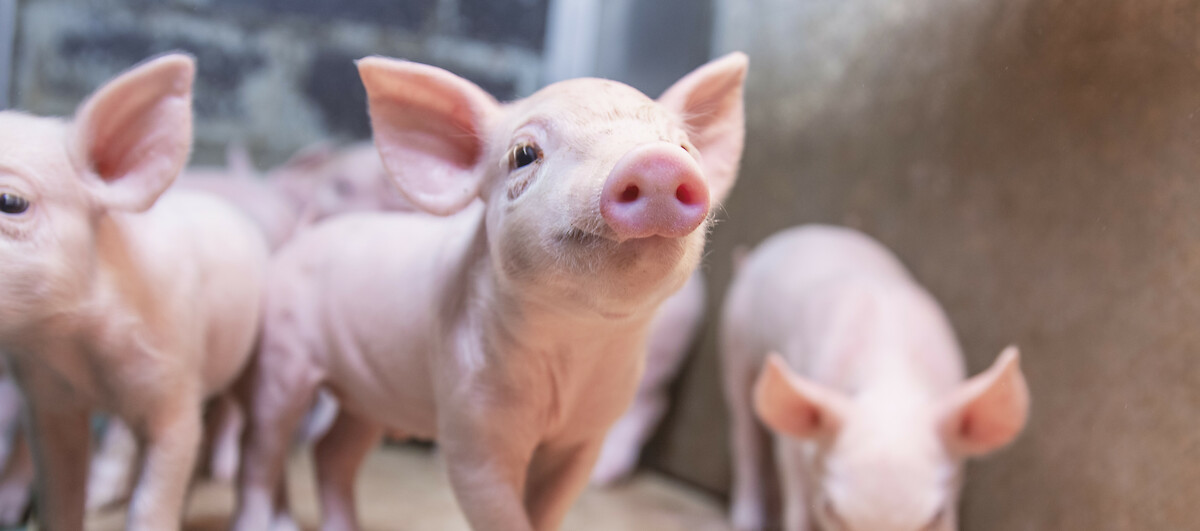
A healthy gut: THE feeding goal for piglets after weaning
After a successful transfer to the flat deck, a new phase of life begins for piglets. In the following 50 days or so, the animals increase their weight to about 30 kg until they are weaned from the flat deck. Whether this phase goes smoothly depends to a large extent on the piglets' intestinal health. Especially now it is important to avoid gastrointestinal problems and to optimally develop the microflora in the piglets' intestines. In this way, you optimally support the development of the piglets:
- avoid a feed intake hole,
- prevent overeating and weaning diarrhoea,
- strengthen and develop the microflora in the piglets' intestines.
1. Avoid a feed intake hole with its negative consequences for piglets
A consistently high feed intake is the key to successful weaning of piglets. For this, it is important that young pigs eat evenly and regularly. A feed intake gap caused by stress or digestive problems must be avoided at all costs. If it does occur, it can have some undesirable effects on the body and the development of the piglets:
- Undersupplied piglets are usually not sufficiently supplied with all the nutrients needed for growth and development. Especially an undersupply energetic The body is particularly weakened by an undersupply in this phase with high energy requirements.
- A longer fasting period (from about 10 hours) can change the composition of the feed slurry in the intestine. As a result, the proportions and ratios of microorganisms in the intestine shift, which negatively affects the efficiency of future feed conversion. In addition, bacteria of the microflora die off. This releases endotoxins (bacterial decay products) that can damage the piglets' intestines and bodies.
2. Avoiding overeating and weaning diarrhoea in piglets
Digestive problems in piglets are usually particularly delicate: On the one hand, they have a negative effect on the nutrient intake and thus the development of the animals - on the other hand, the still maturing immune system is not optimally supplied and developed: This leads to problems. The main cause of digestive problems in piglets is overeating due to an undersupply of feed.
If piglets eat too little feed (e.g. due to scrambling at the feed trough, lack of orientation or stress), overeating usually follows. To compensate for the energy deficit of an undersupply, the young animals quickly consume large amounts of feed. However, this usually leads to problems: The food mush is not sufficiently acidified in the stomach. This in turn reduces the digestibility of the food. Subsequently, an excessive amount of undigested starch and protein often reaches the large intestine. Harmful germs can multiply dramatically in this nutrient medium and thus upset the microbiota of the piglet intestine. The result: weaning diarrhoea.
3. Strengthen the piglets' microflora and promote intestinal health
Only when the intestines function properly do piglets get all the nutrients from the food they need for their growth and development. Intestinal health therefore forms an important pillar for smooth piglet rearing. A strong intestinal barrier also protects against harmful germs and inflammation caused by them. With the right feed, pig farmers can influence the development of good gastrointestinal health.
Properties of high-quality prestarters and piglet-rearing feeds (FAZ):
Probiotic properties
Probiotics are special feed additives containing beneficial microorganisms. These have a positive effect on the bacterial environment in the small intestine. In this way, they can positively influence the feed conversion of piglets. Their presence in the small intestine competes with harmful germs (pathogens) and thus inhibits their development. The weakly developed immune system of the young pigs then has to deal with fewer pathogens - this frees up capacities for better development and higher performance.
Prebiotic properties
Prebiotics (syn. prebiotics) are indigestible carbohydrates in feed. These dietary fibres develop their digestive properties in the large intestine, where they are fermented. There they can boost the production of volatile fatty acids. Especially with still young piglets, it is important to steer the development of the microbiota in the intestine in the right direction right from the start.
Antioxidant properties
High-yielding pigs have a high metabolic rate. In stressful situations (e.g. heat stress, disease outbreaks or housing changes), free radicals are released. Free radicals are reactive, aggressive oxygen compounds that can cause inflammation in the body. Antioxidants are substances found in various foods that bind free radicals and thus protect cells from inflammation and oxidative stress. For example, vitamin C, vitamin E or polyphenols have antioxidant properties.
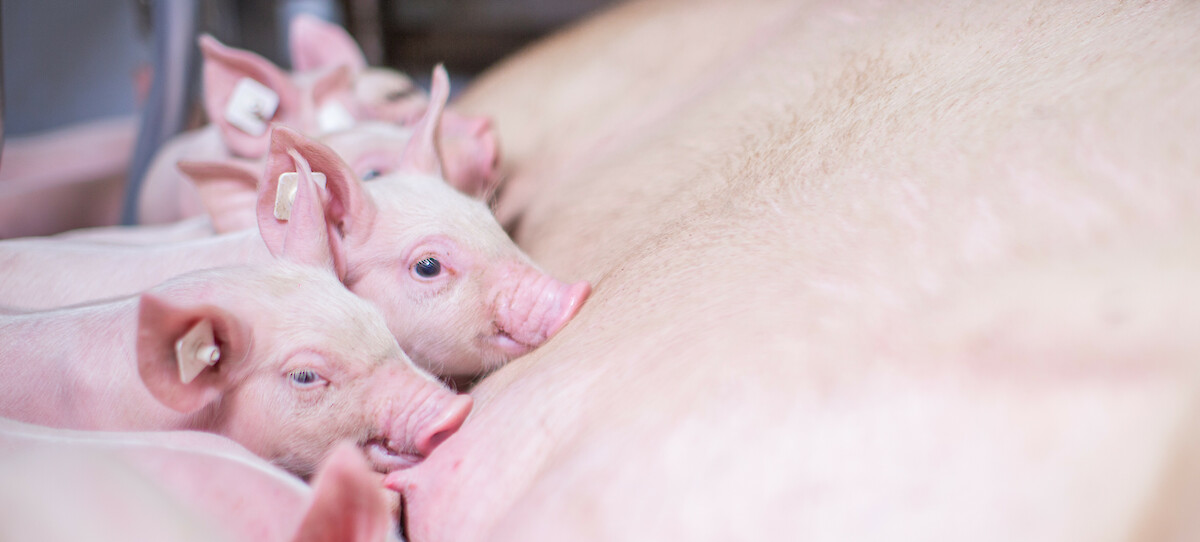
This brings performance: feeding vital piglets
The piglets ' intestines are healthy? The intestinal barrier strengthened and the microenvironment developed? Then the piglets ' performance can now be fully exploited. For this, it is important that the lysine-energy ratio of the piglet feed is correct. Young animals have a high potential to produce lean meat. This potential is lost more and more in the course of a pig's life and the live weight gain shifts from meat gain to fat gain. Therefore, it is important to feed the lean meat of piglets in the best possible way.
Whether piglets put on fat or meat depends not only on their age, but also on the feed composition. Any energy that piglets consume in excess of their requirements is put on fat. For muscle growth, protein (especially amino acids) is needed in addition to energy. This shows that the ratio of energy to amino acids is important for meat gain. The lysine-energy ratio is important. Lysine is the first limiting amino acid from which pigs form protein to build up their muscles. Since piglets excrete excess amino acids undigested, lysine should be present in the feed in the right ratio to energy.
For a high lean meat content, however, it is important to keep an eye on the amino acid pattern of the feed as a whole. A piglet feed optimised for precaecal digestible amino acids (i.e. small intestine digestible amino acids) is preferable to a feed optimised for gross amino acids. After all, the difference between the two values is excreted undigested and cannot be used by the animal.
Components of high-quality piglet feed for the time of weaning
Increase the digestibility of the piglet feed
The better piglets digest their food, the more nutrients are available for growth and development. The digestibility of the Piglet feed is therefore of great importance for the development of the piglets. Accordingly, attention should be paid to optimising the digestibility of piglet feed. Certain feed additives can help with this.
-
NSP enzymes
Some feed components (e.g. dietary fibres) swell strongly. This can have a negative effect on the consistency of the feed slurry. However, viscous feed slurry is not optimally broken down by digestive enzymes in the stomach and intestines and the feed is consequently not optimally digested. The addition of non-starch polysaccharide-splitting enzymes (NSP enzymes for short) helps to break down the swelling dietary fibres of the feed, thus making the intestinal contents more fluid so that the digestive enzymes have easier access to the food components. This improves the digestibility of the feed. -
optigrain®
There are several reasons for using digested components in piglet feed. Pressure hydrothermal treatment of feed components that are difficult for weaned piglets to digest - above all wheat, barley and maize - increases their surface area, which improves their digestibility. This leads to rapidly available energy and thus to a rapid rise in blood sugar levels shortly after feeding. As a result, a feeling of satiety arises. However, with the subsequent drop in the blood sugar level, hunger quickly returns (McDonald's effect). Thus, broken-down components ensure regular feed intake in many small portions, while at the same time ensuring digestion of the starch in the anterior intestinal segments Deutsche Tiernahrung Cremer produces such components under the brand name optigrain® using the patented opticon® process.
In the declaration, the component is described as "pressure hydrothermally digested (...)". -
optiraps®
The use of appropriately treated protein- and fibre-containing raw materials (e.g. rapeseed meal) also offers advantages: Treatment with heat and pressure using the opticon® process opens indigestible fibre membranes. This makes internal nutrients in the large intestine usable for the piglets. The result is a mix of fibre components that can be digested at different speeds, which promotes and develops the microbiota in the large intestine Deutsche Tiernahrung Cremer uses digested rapeseed under the brand name optiraps® . Another advantage of the opticon® treatment: toast and roast aromas are created, which have an attractive effect on piglets and thus contribute to a high, even feed intake.
In the declaration, the component is described as "pressure hydrothermally digested (...)". -
praecaecal digestible Amino acids
The protein digestibility of piglet feed can also be increased. This is best achieved by increasing protein quality and looking at protein components differently. This includes, for example, optimising for precaecal digestible amino acids. This is calculated on the amount of amino acids that can actually be absorbed by the animal in the small intestine. Highly digestible protein sources are also suitable for feeding, e.g. potato protein or protein hydrolysate. Protein hydrolysate in particular meets all the requirements piglets have for protein: It has a high proportion of free amino acids and is therefore very easy to digest - but at the same time it is also particularly tasty. The use of pressure hydrothermally treated protein sources can also help to improve the digestibility of the ration. Appropriate piglet feeds contain, for example, digested soya protein concentrate or toasted soya beans. These ingredients have particularly few antinutritional properties (e.g. trypsin inhibitors) and are therefore highly digestible, especially for piglets.
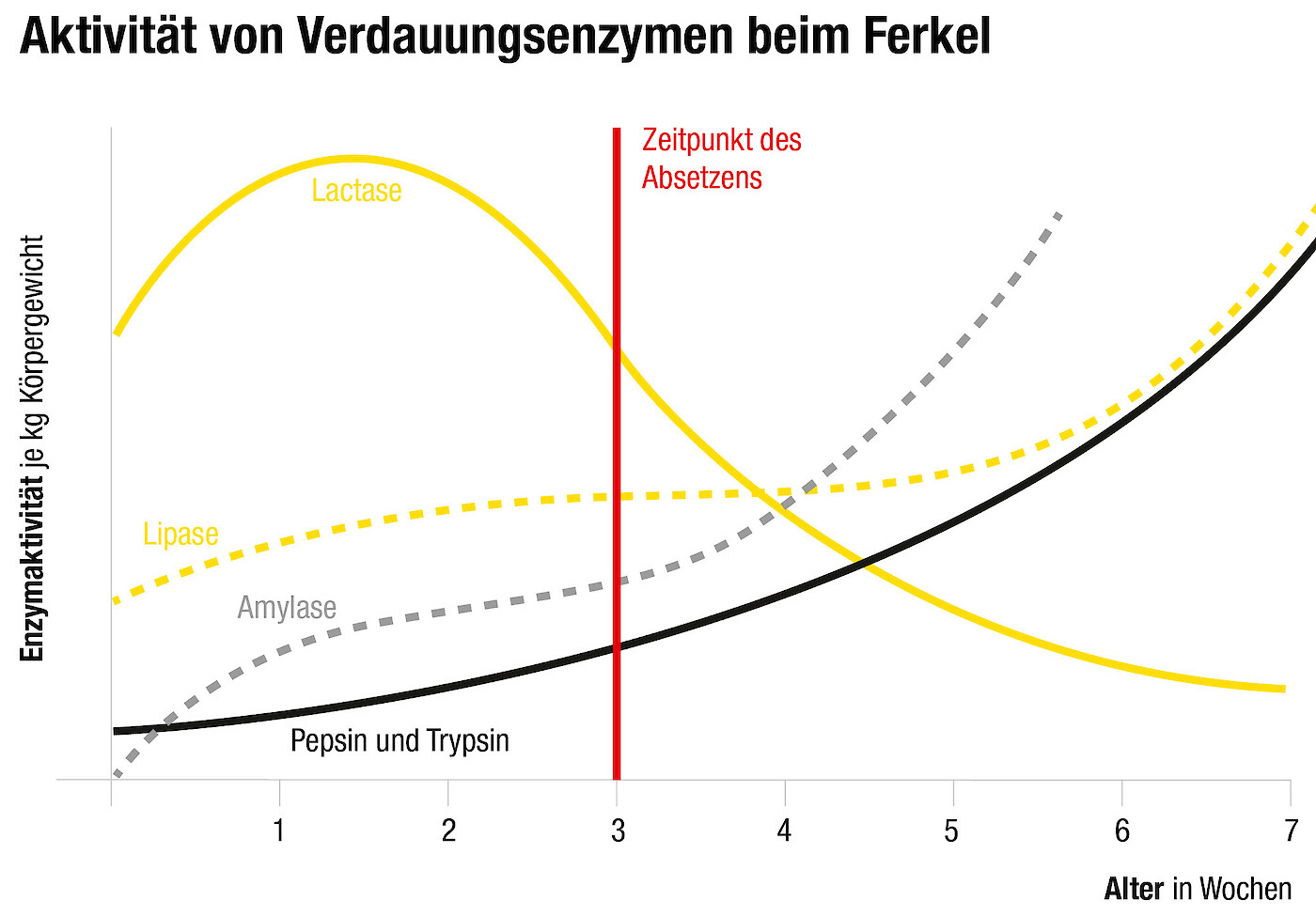
Reduce stomach pH of weaned piglets for optimal digestion
The sow's milkis decomposed by lactic acid bacteria. The lactic acid produced by the bacteria strongly lowers the pH value in the piglets' stomachs. After weaning and the switch to a diet containingcereals and starch, the acidifying effect of lactic acid ceases. However, the production of gastric acid is only just beginning in piglets, which have had little or no solid food up to now (see illustration).
Buffering components
Certain components in piglet feed (e.g. crude protein and calcium) have a "buffering" effect on the pH value in the piglet stomach and thus prevent it from dropping. However, if the stomach pH remains high, piglets cannot sufficiently utilise the protein in the feed. The protein-cleaving enzyme pepsin, which is needed for this, only becomes active at a low pH of less than 3.
Low protein and calcium
Piglet feed should therefore contain only little crude protein (< 18 percent) and calcium (< 0.65 percent). A comprehensive acid concept (including formic lactic acid) also has a firm place in piglet feeds: it helps to lower the pH value in the stomach to the desired pH range of 2 - 3.
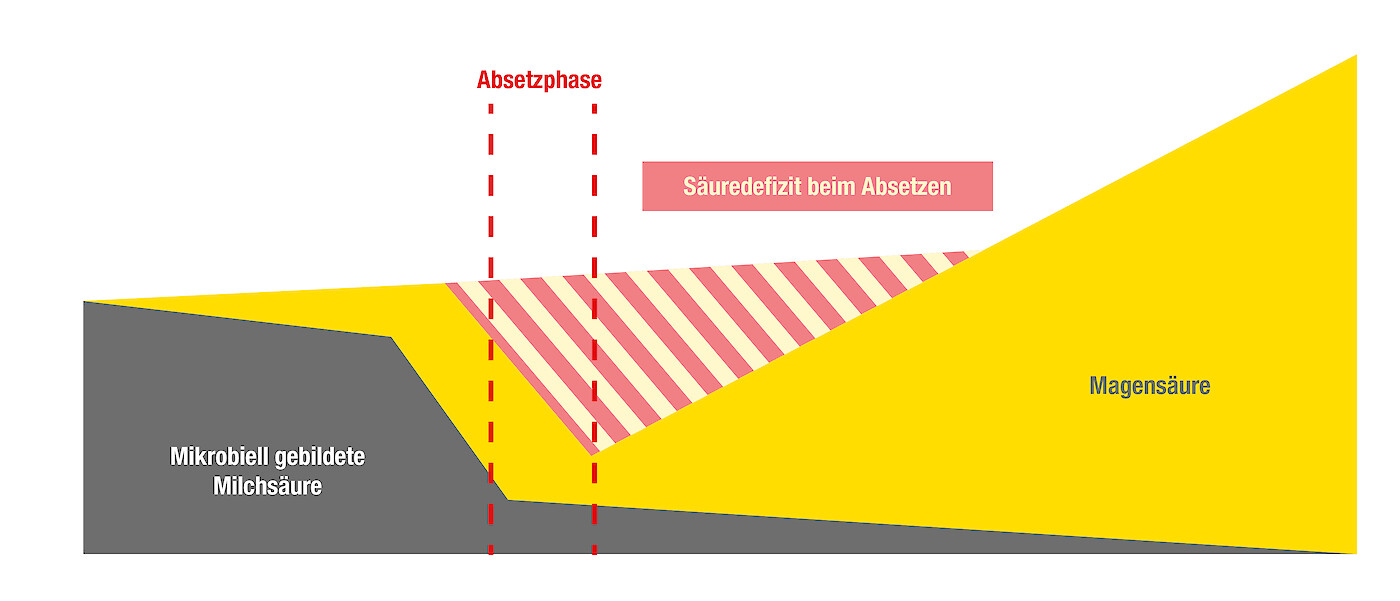
A high proportion of whey and milk products
What the piglet doesn't know, it won't eat: In order to motivate suckling piglets to eat solid food, it is worth choosing a feed with a high proportion of whey protein Weaner feed with a high proportion of whey and milk products. The sweetish taste is familiar to piglets from sow's milk. In addition, the enzyme system is optimally adapted to the digestion of these components. The acclimatisation of young pigs to grain- and starch-rich food is gentle and not so abrupt.
Milk from the sow is particularly fatty. The piglets ' gastrointestinal tract can optimally utilise fats and fatty acids. High-fat Piglet feed are therefore particularly suitable for feeding at the beginning of the weaning phase. But here, too, the devil is in the detail:
- Feed with short- and medium-chain fatty acids (the building blocks of fats) can be better utilised by piglets than long-chain ones.
- Unsaturated fatty acids of vegetable origin (e.g. in soya oil) are easier to digest than saturated fatty acids from animal sources. However, as the latter are more palatable, a mix of both fat sources is suitable in prestarter or weaning feed.
Conclusion: "Weaning piglets the right way: this is how it works!
- The weaning phase is important for the growth and development of piglets.
- The day of weaning from the sow is particularly stressful - pig farmers should therefore prepare it well.
- During the weaning phase, several feeding goals are in focus: to avoid digestive problems (caused e.g. by overeating or choosing the wrong feed), to develop the microflora of the digestive tract and to strengthen the intestinal barrier.
- To optimally feed the performance of healthy piglets, the lysine-energy ratio as well as the aminogram must fit.
Contact person

Downloads
Contact person


